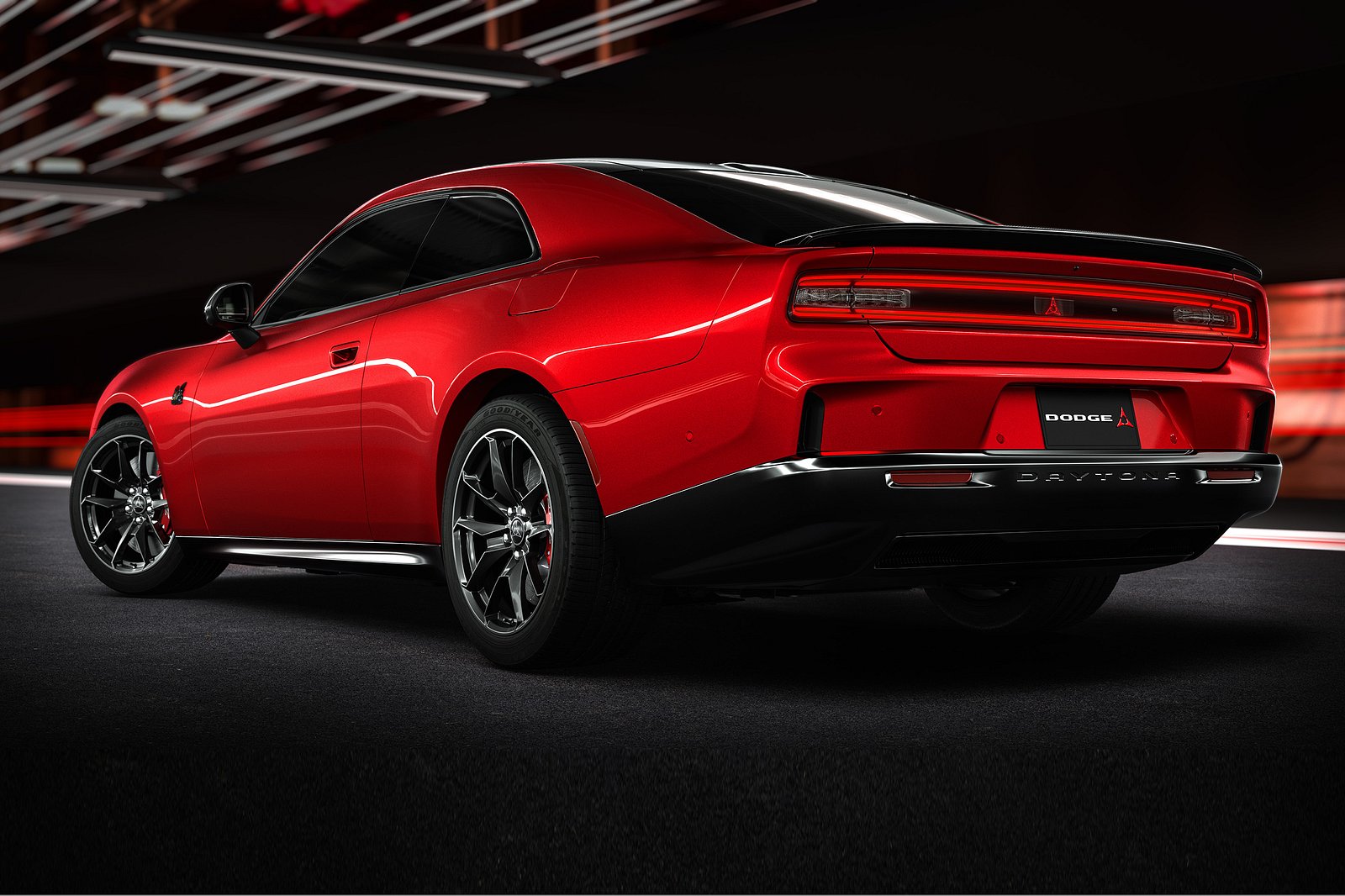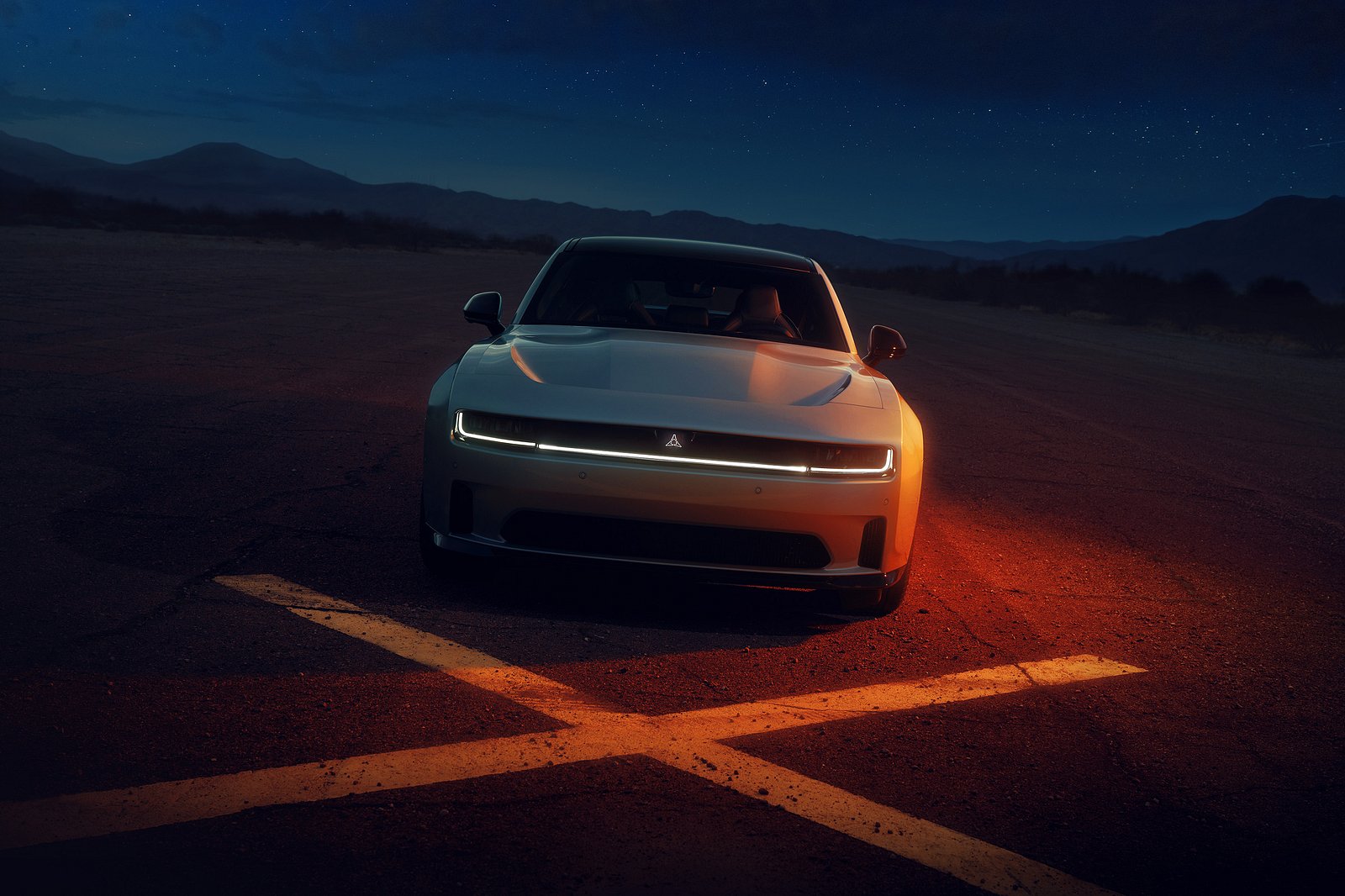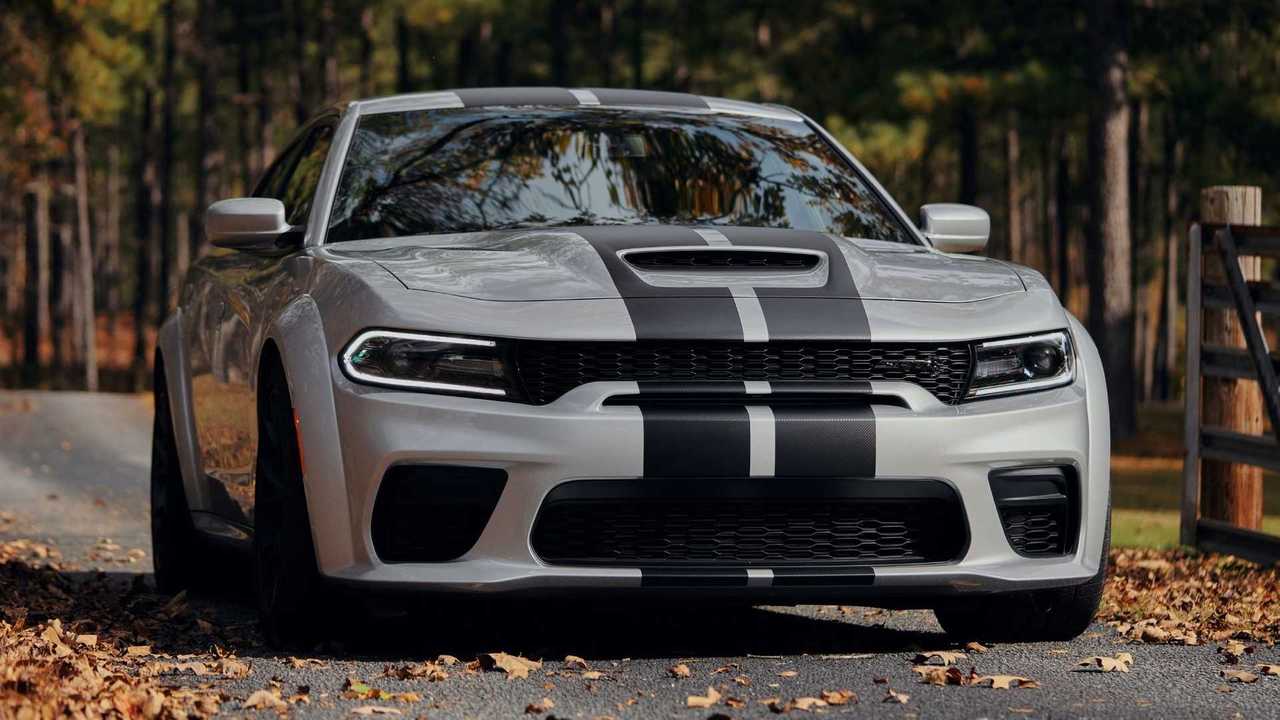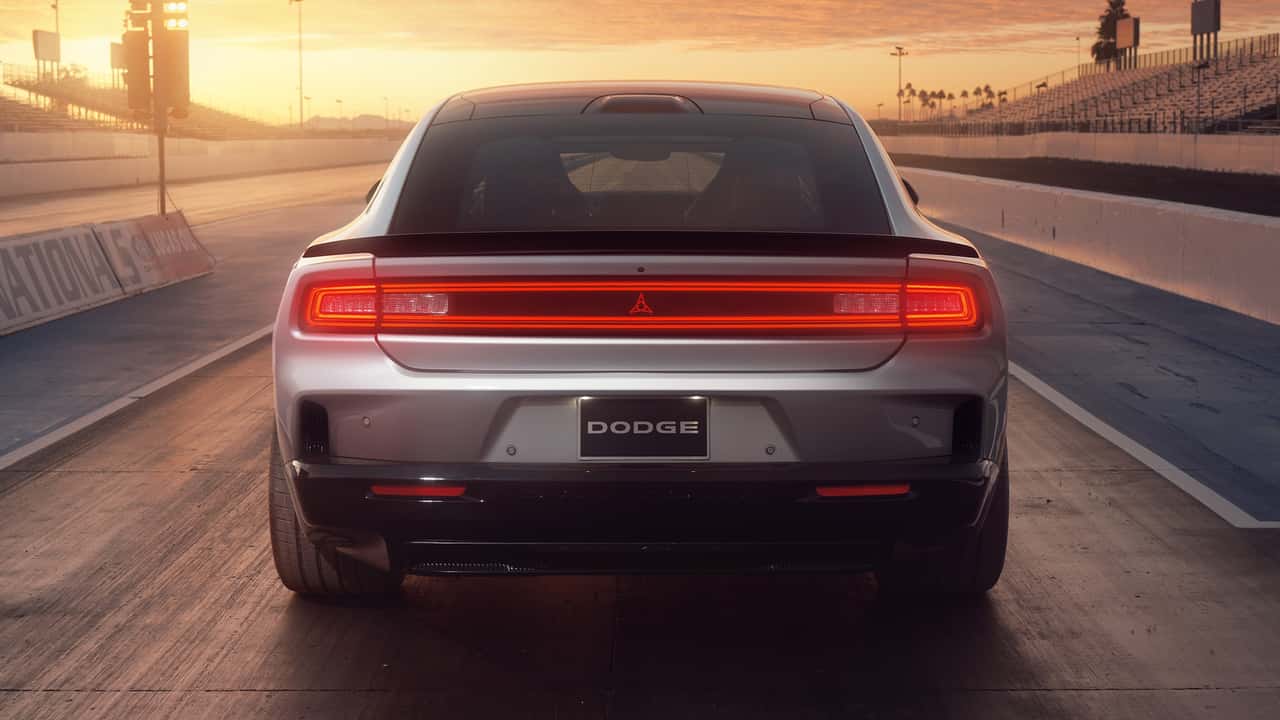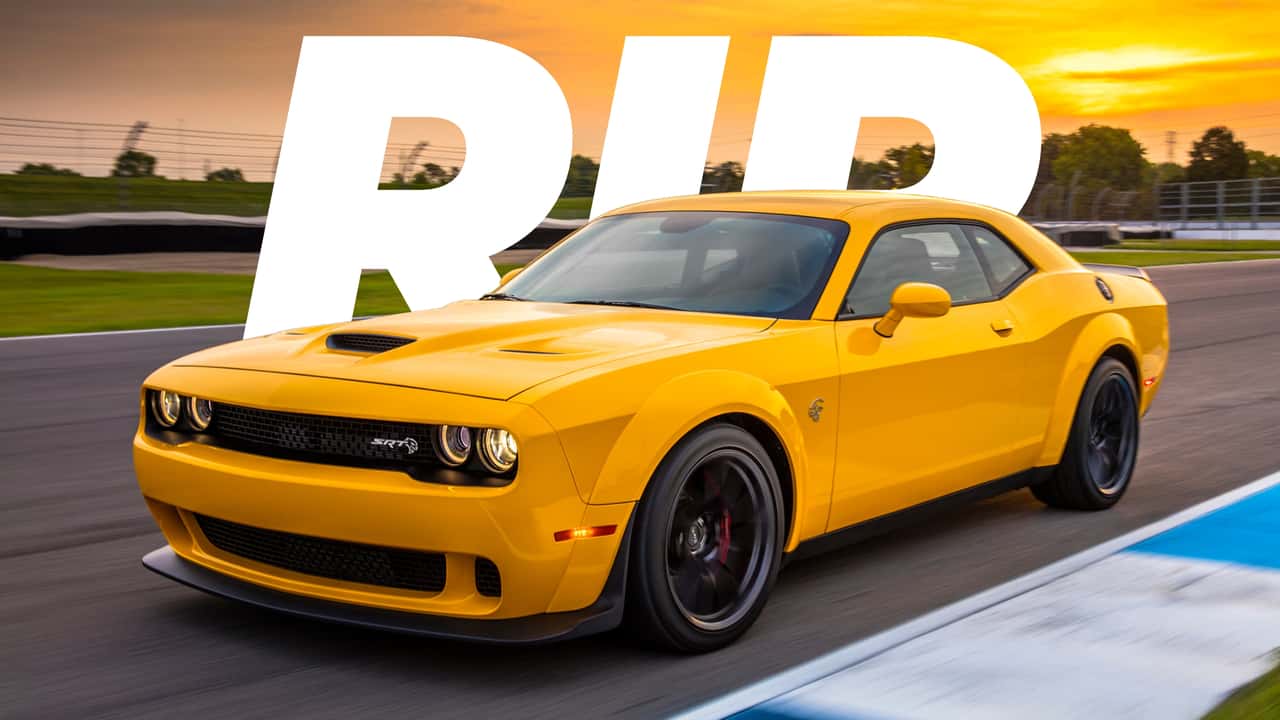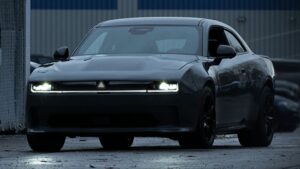Capacious Rear Hatches Available for Sedans and Coupes.
In an exciting release, Dodge unveiled the groundbreaking Charger Daytona as their inaugural electric car. Despite the shift in powertrain, it proudly maintains its title as the swiftest and mightiest muscle car on the market. The 2024 model brings a sedan and coupe option, both with matching wheelbase lengths, and is available in two different trim options upon debut.
The highly anticipated performer, the Dodge Daytona Scat Pack, has made headlines with its impressive numbers – churning out a maximum of 670 horsepower and 627 pound-feet of torque. This beast is expected to accelerate from 0-60 mph in just 3.3 seconds. Another option is the R/T version, generating up to 496 horsepower and 404 pound-feet of torque, allowing it to reach 60 mph in a respectable 4.7 seconds. The top speed for the R/T is rated at 137 mph, while the Scat Pack falls slightly behind with a limit of 134 mph. However, on the quarter mile, the Scat Pack regains its glory by clocking in at 11.5 seconds (compared to the R/T’s time of 13.1 seconds).
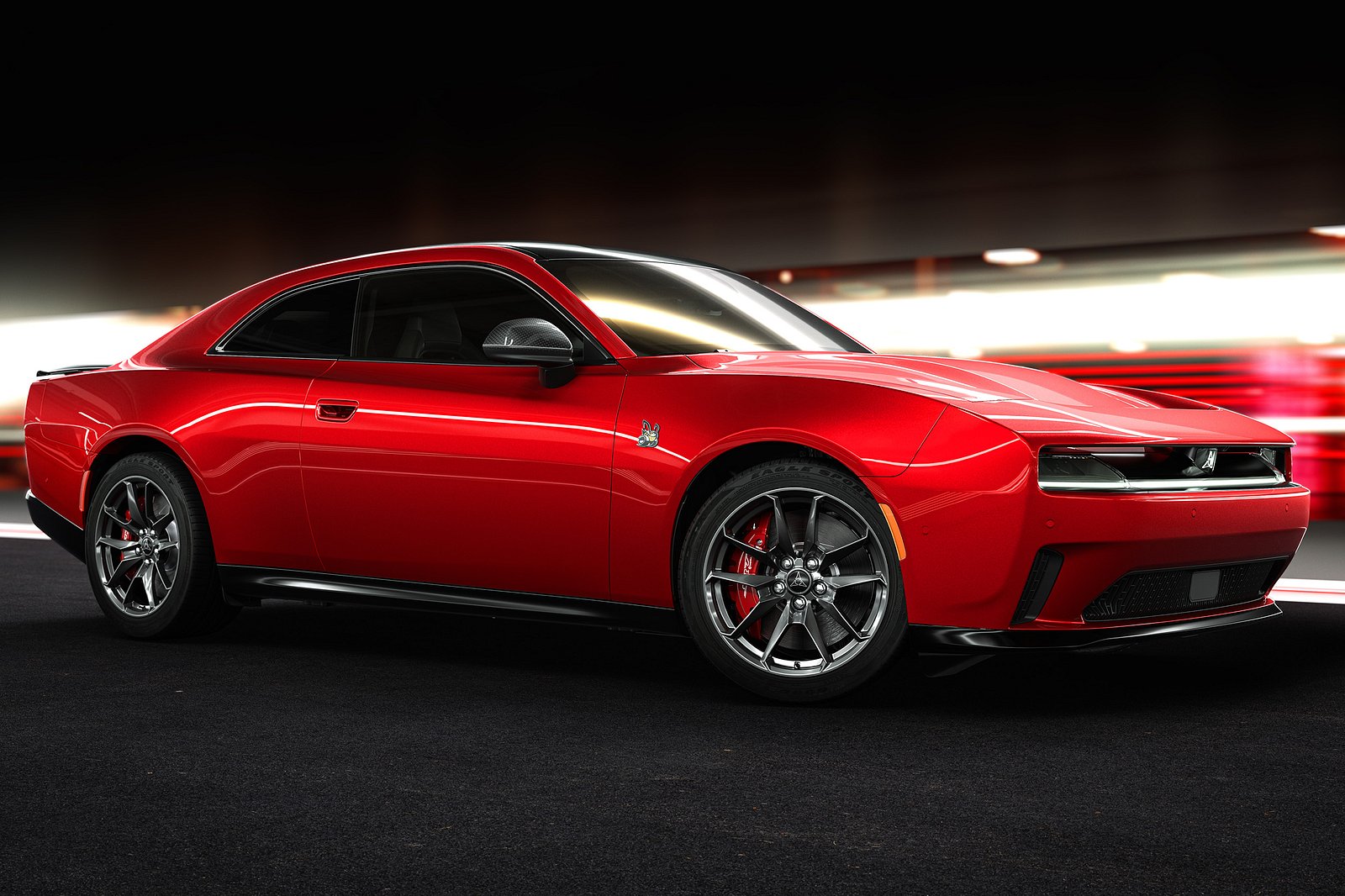
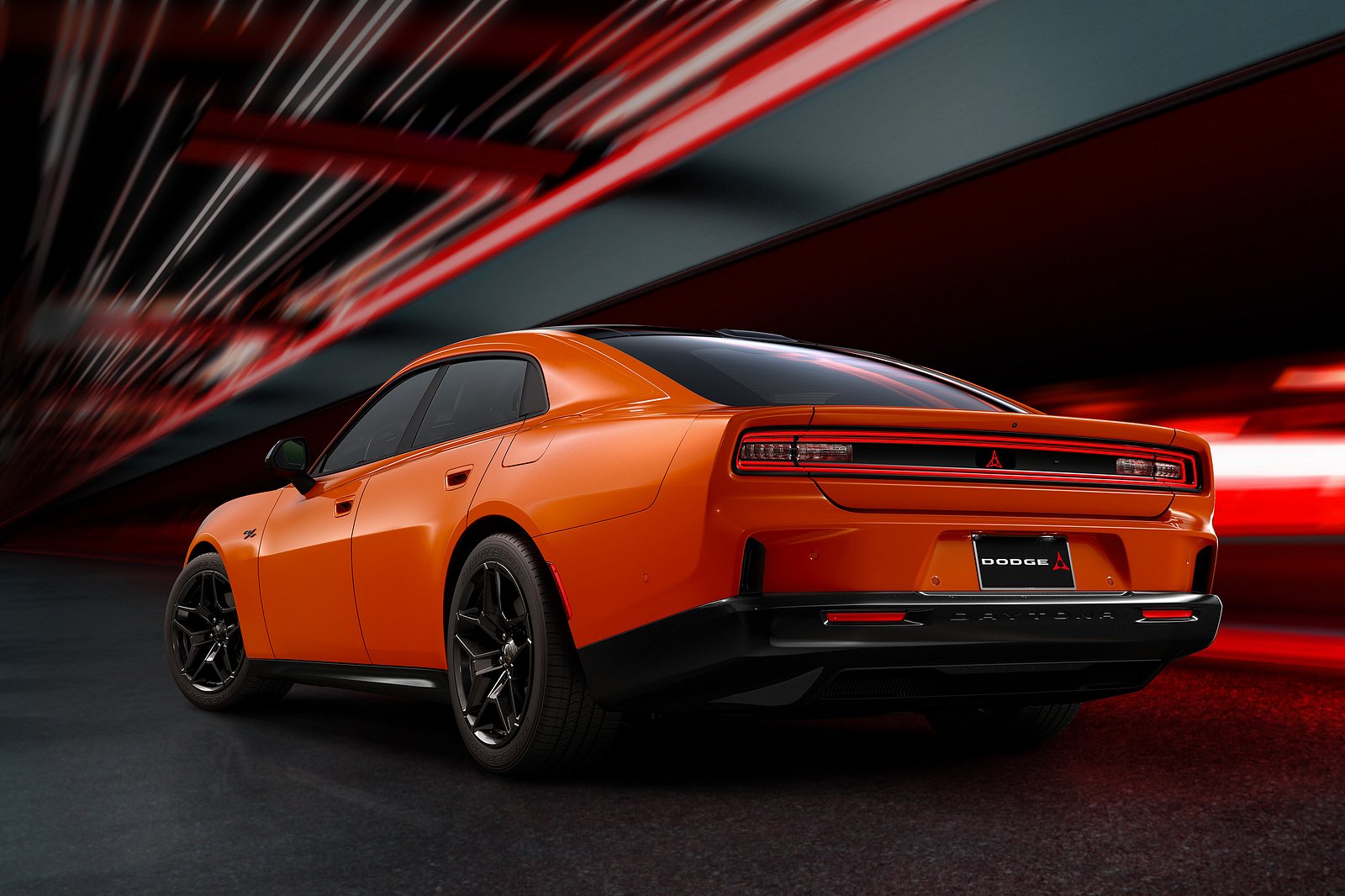
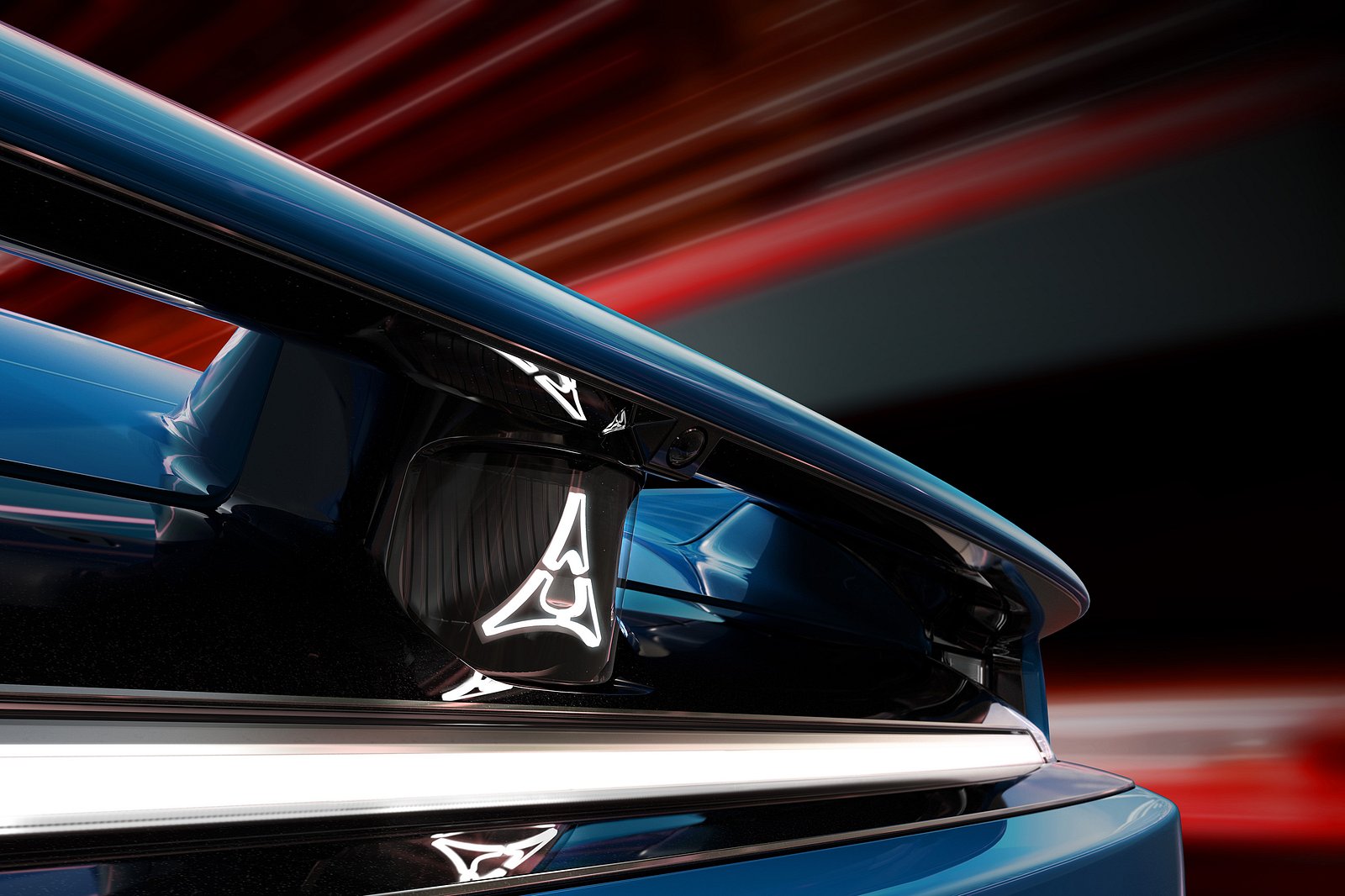

The latest edition of the Charger is constructed on the STLA Large framework and boasts a 400V structure, equipped with individual motors on both the front and rear axles. While it comes standard with all-wheel drive, the front electric engine can be seamlessly disconnected to enhance efficiency and provide other advantages. The rear section boasts a mechanical limited-slip differential and each component, including an inverter, gearbox, and motor, generates a substantial output of 250 kW (335 hp) and 300 lb-ft of torque.
The 400V system boasts six tiers of capability, but there is a caveat to the previously mentioned numbers: Dodge has fine-tuned both versions. As it stands, the Charger Daytona R/T comes standard with a Direct Connection Stage 1 enhancement package, boosting its initial 456 horsepower by an additional 40 hp. Correspondingly, the Daytona Scat Pack is fitted with a Stage 2 kit, gaining an impressive 80 hp for a grand total of 670 horses.
Upcoming versions will come equipped with 456 horsepower and 590 horsepower, respectively, unless customers opt for dealership tuning packages. In the future, there may also be an 800-volt Banshee flagship model, potentially featuring simulated engine vibrations.
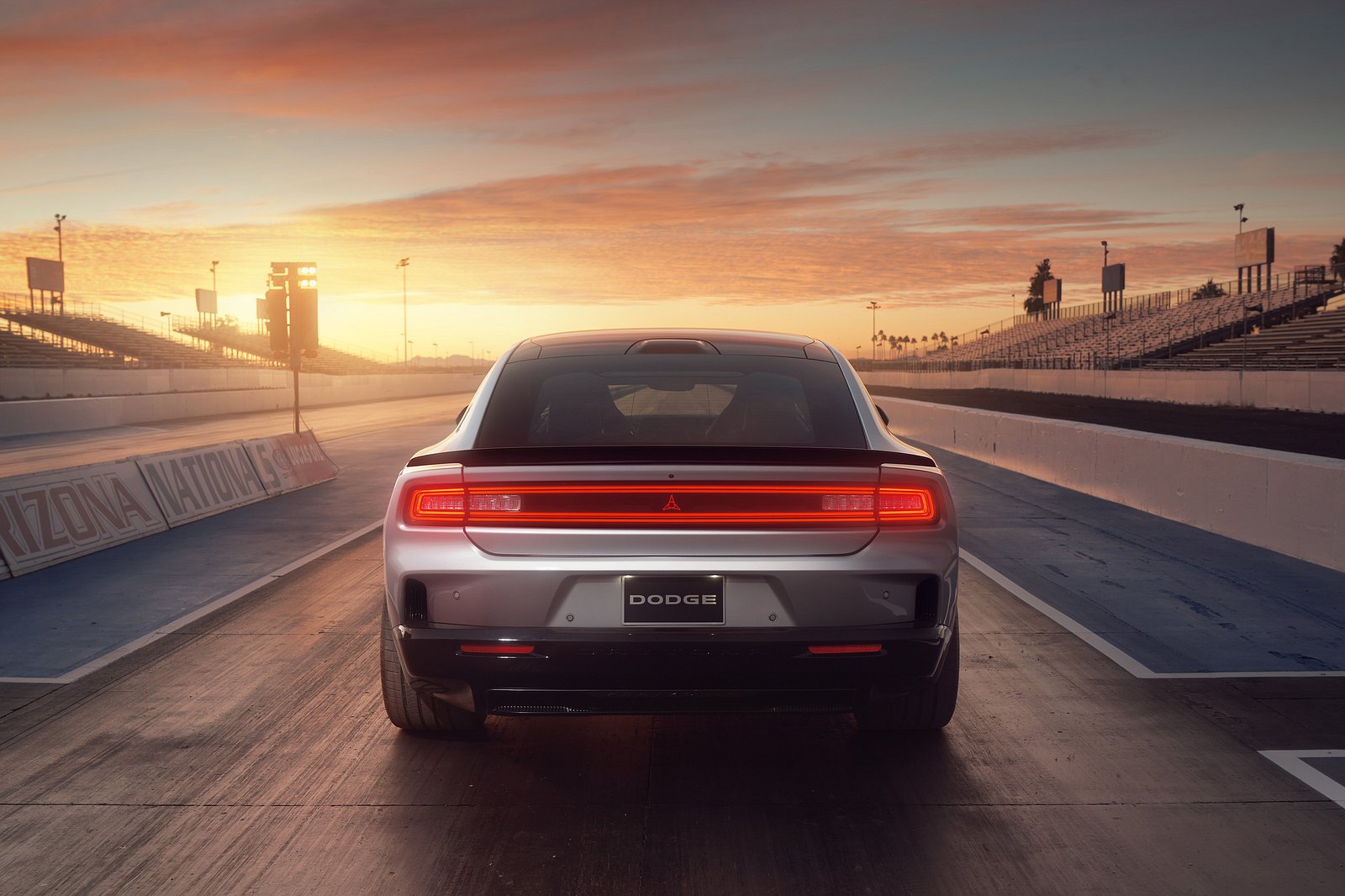
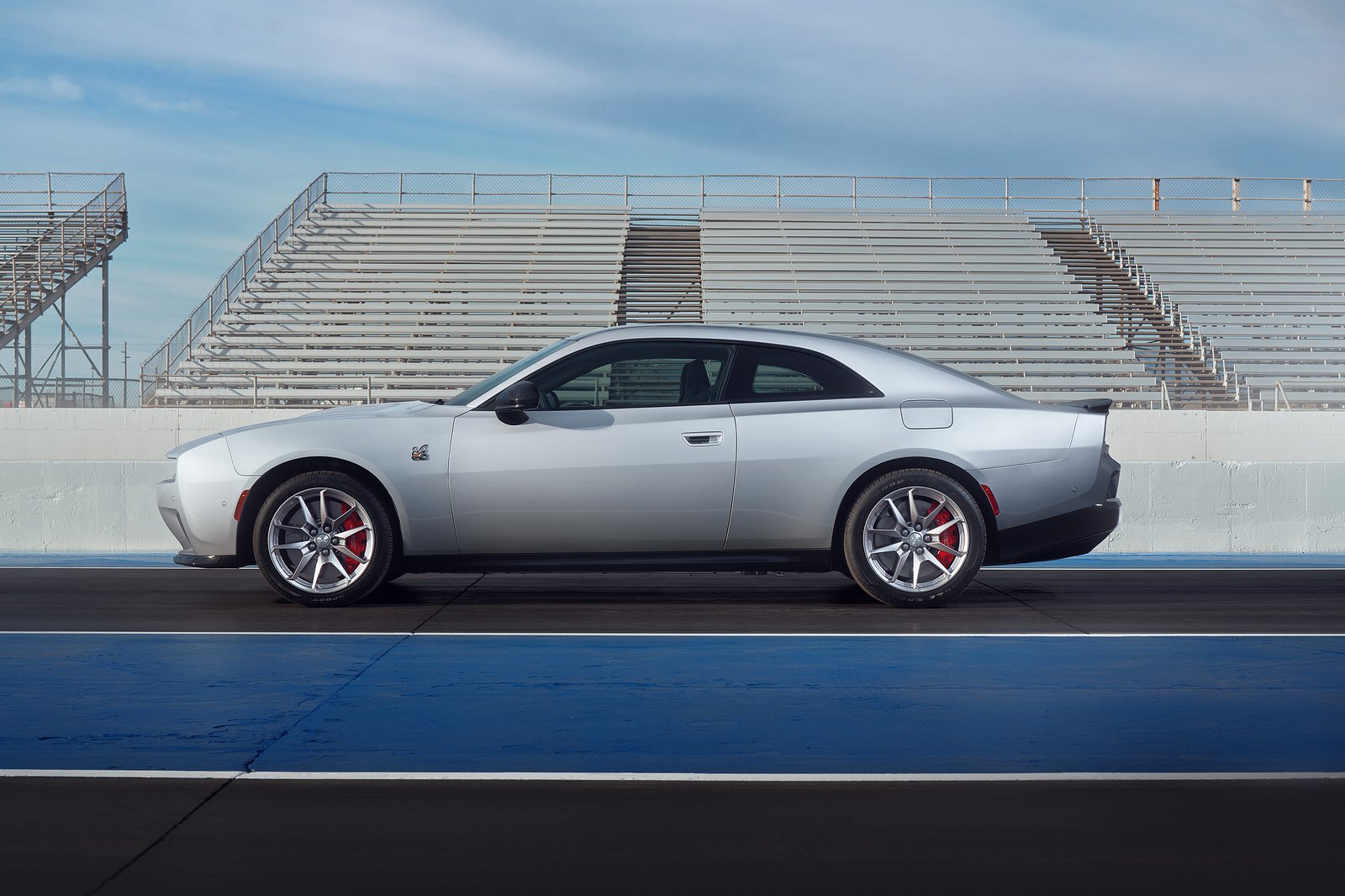


Assisting in slowing down the powerful muscle car are the most sizable brakes ever featured on a Dodge vehicle: 16-inch Brembo rotors equipped with six-piston calipers at the front and four-piston calipers at the back. These will come as standard on all 2024 models, but unfortunately, they will only be accessible through the Track Pack option in the future. This is unfortunate because the Charger Daytona carries a hefty weight of 5,838 pounds, tamed by staggered Goodyear Eagle F1 Supercar 3 tires with measurements of 305/35 on the front and 325/35 on the rear. Each end of the car boasts 20-inch wheels, although smaller alternatives will be obtainable without the Track Package (more information to come).
The first and foremost rule of this article rewrite is to maintain the exact quoted text, which states that a multi-link front suspension system is combined with a fully independent four-link rear as the standard setup. Additionally, opting for the Daytona Scat Pack model with the Track Package grants access to the option of dual-valve semi-active dampers. According to the source, all models possess a near-perfect weight distribution between the two axles and boast sturdier bodies, making it the first Charger model to excel in cornering, unlike its predecessor.
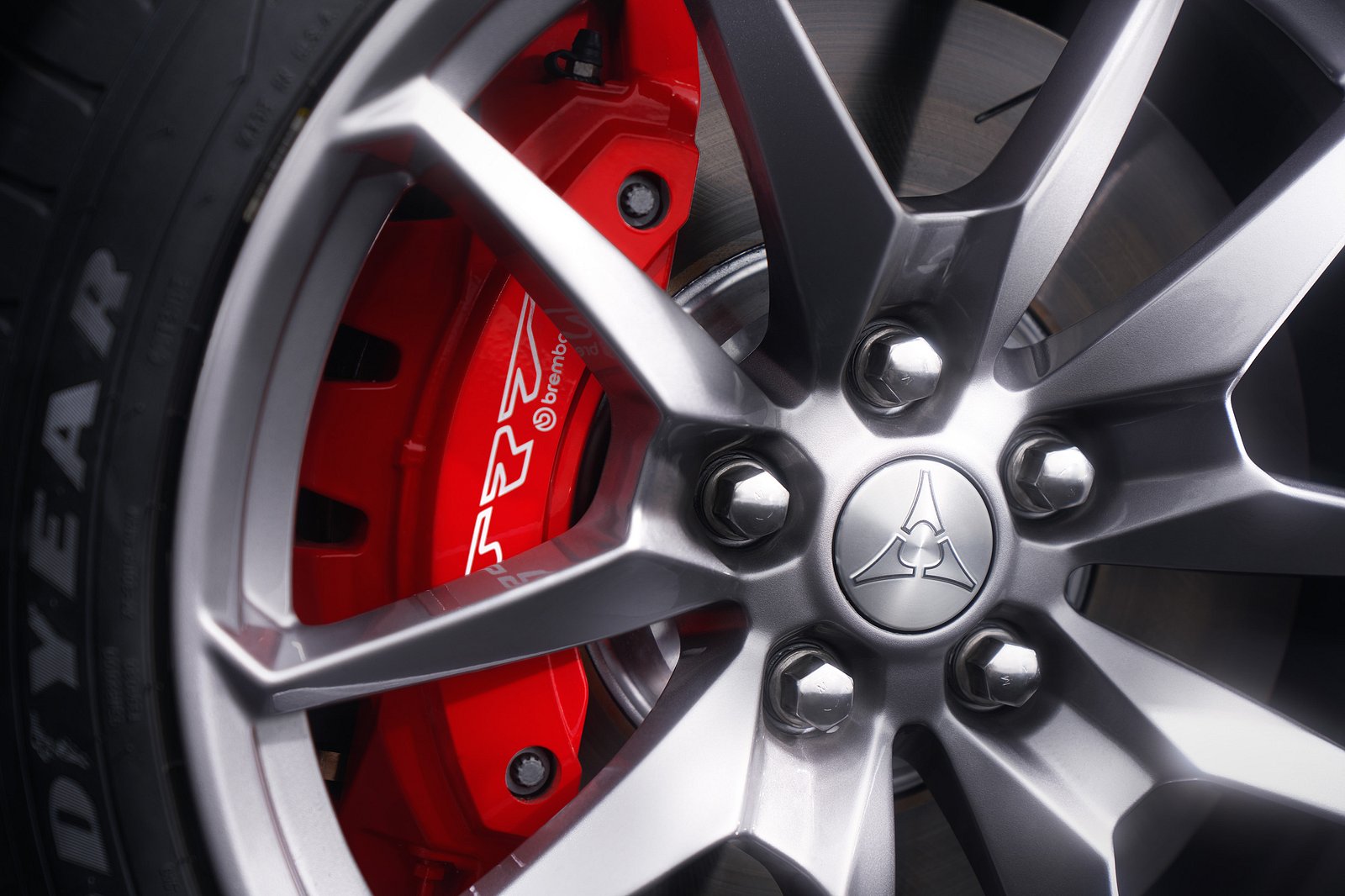
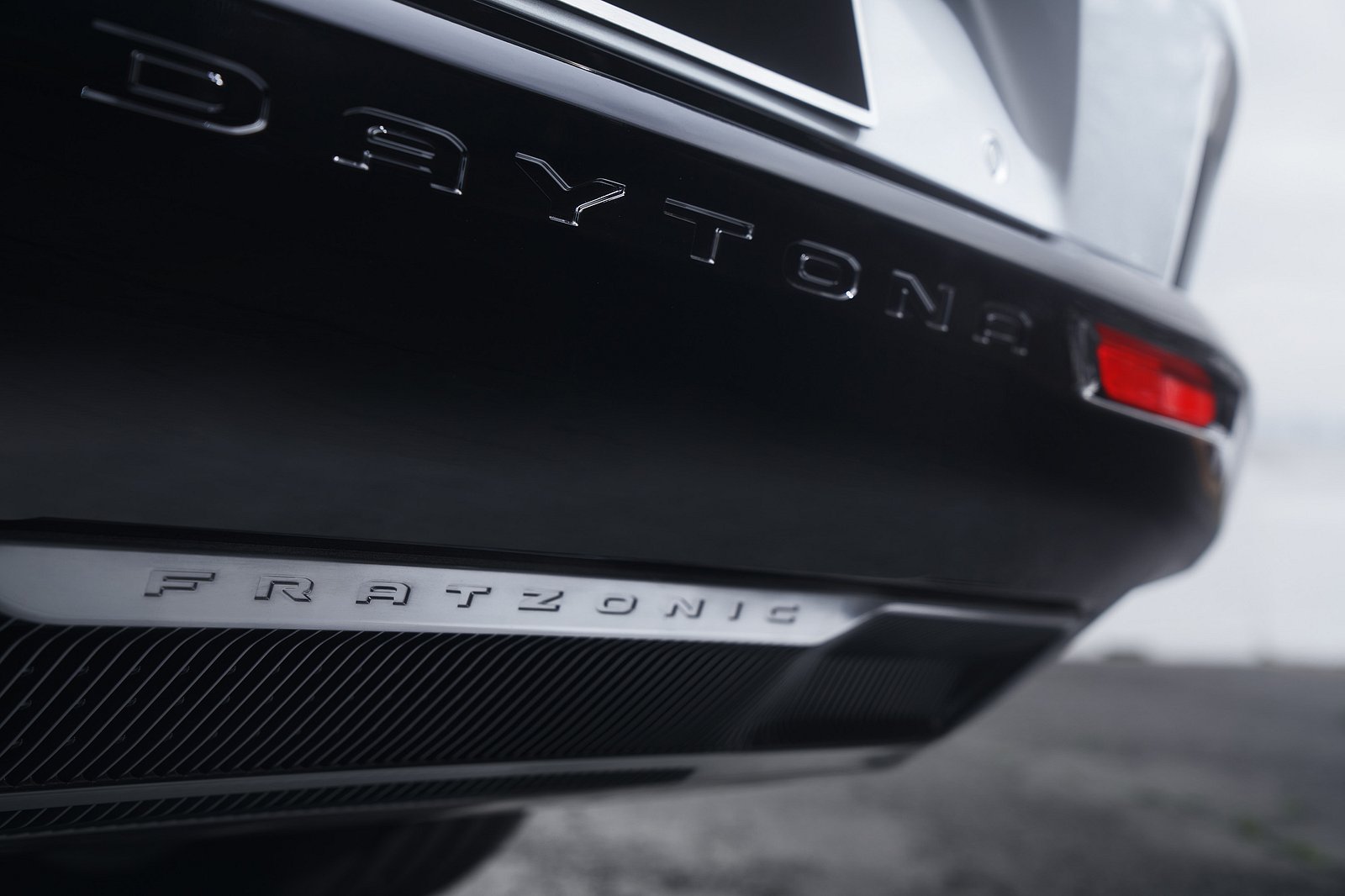

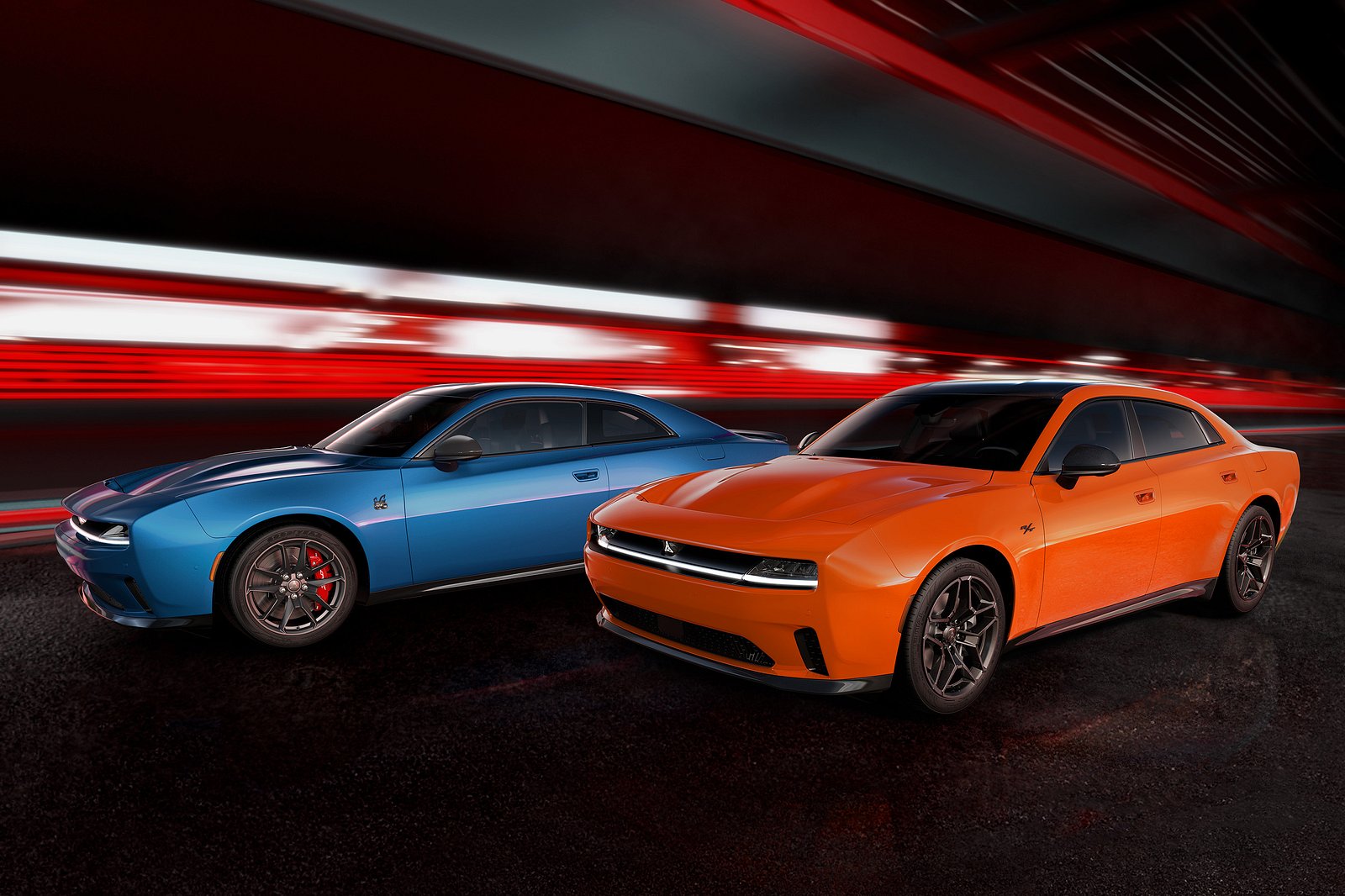
The Charger Daytona comes equipped with a PowerShot mode, which offers a 15-second increase in horsepower by 40 when activated through a button located on the lower right side of the steering wheel. This feature is a standard inclusion in the vehicle. The Charger also boasts five different drive modes, including Auto, Eco, Sport, Wet/Snow, and Track and Drag. It should be noted that the latter two modes are only available as standard on the Daytona Scat Pack model. Additionally, there are five “Race Options” to choose from.
The feature known as Donut Mode is quite straightforward, while the option of Drift Mode provides three levels of regulation for sliding angles. When engaged, the front shock absorbers shift to their softest adjustment while the rear ones become stiffer, facilitating the loosening of the rear end. These two functionalities are only available in the Daytona Scat Pack. Additionally, there is Line Lock (whose purpose is also evident from its name) and Launch Control, with five different settings for launching intensity, ensuring optimal performance on different types of terrain.
The ultimate Race Option available is the Race Prep, aimed at preparing the battery for either drag or track competitions. In order to excel in drag races which are characterized by being brief, this mode generates heat within the battery. On the other hand, for longer durations of track racing, choosing this alternative ensures that the battery starts off at a lower temperature, ultimately prolonging your time on the racing course.
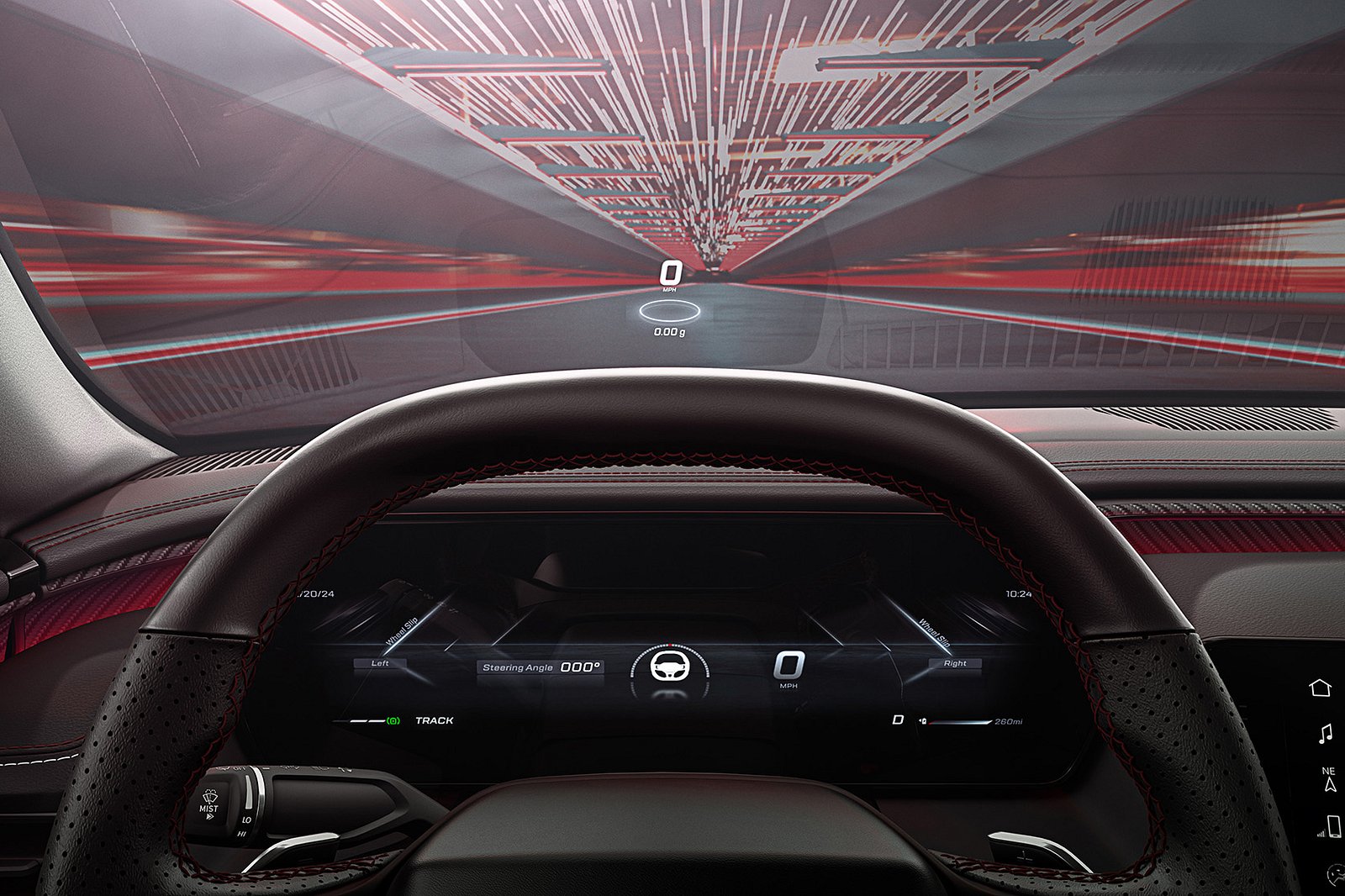
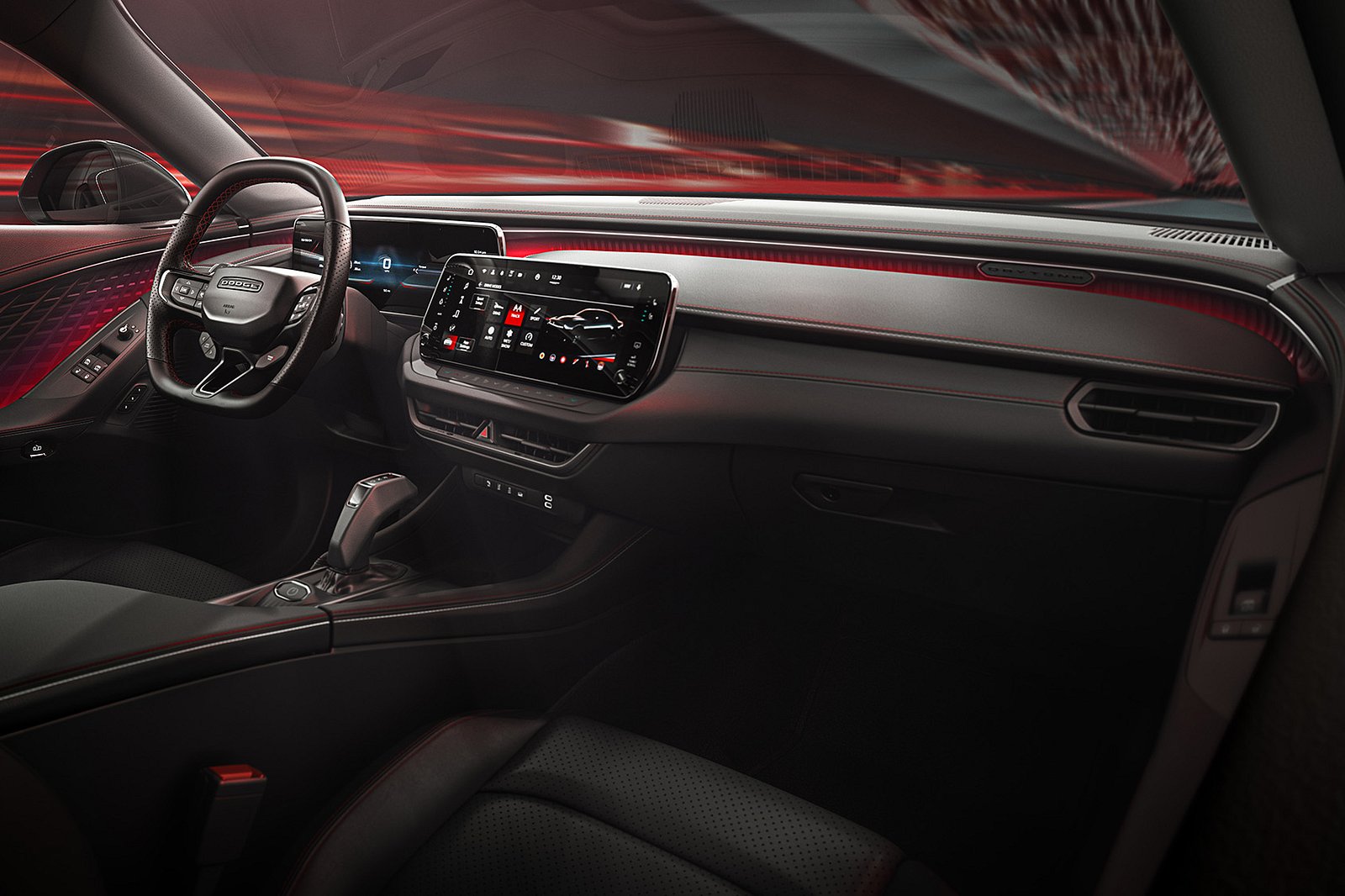

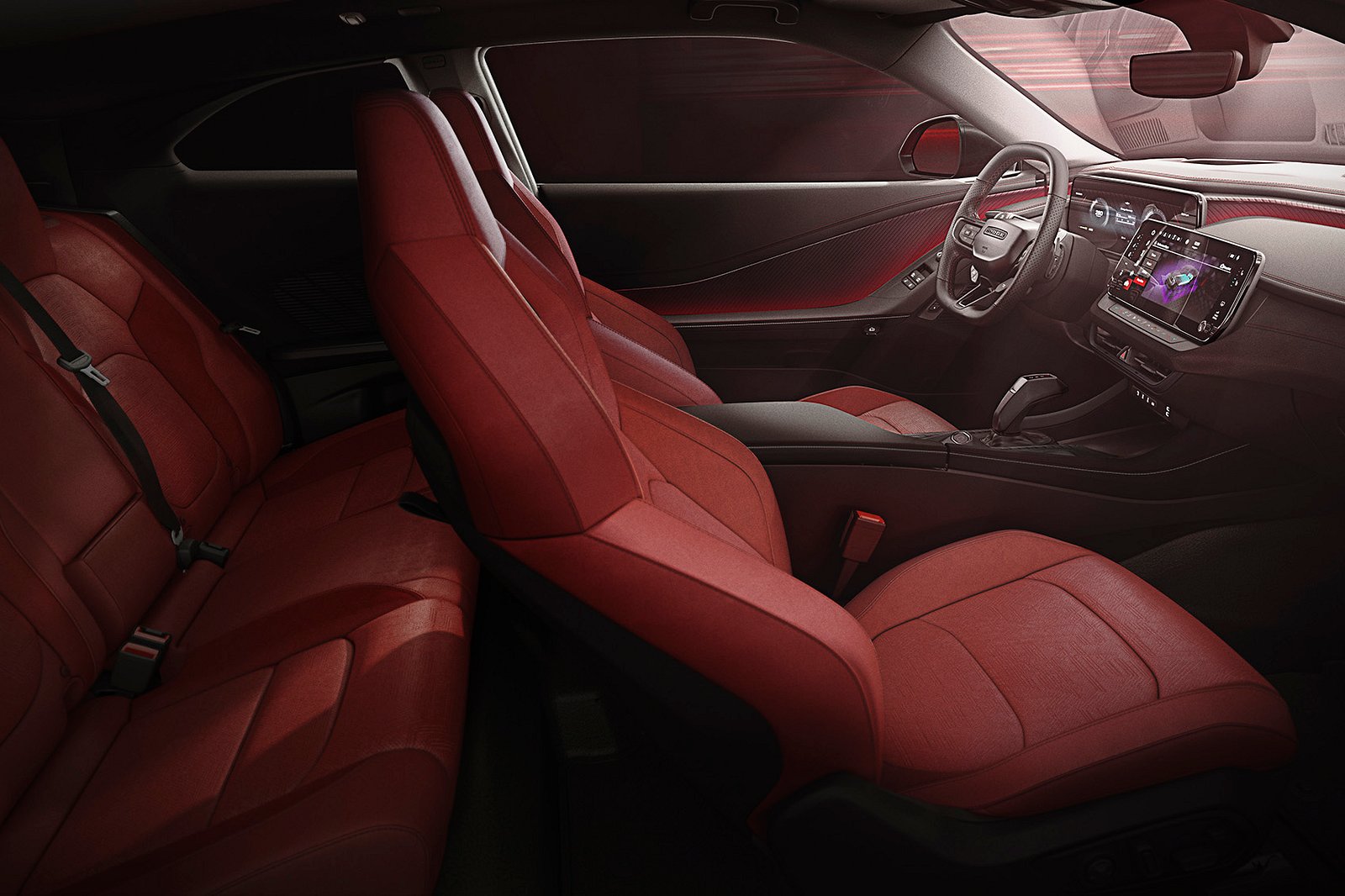
“The radical styling from the original concept has been carried over to production with minimal alterations,” states the article. One of the most notable features that remains unchanged is the R-Wing passthrough on the nose, which not only adds to the car’s aesthetic appeal but also improves downforce. The Dodge logo can be found laser-etched into the headlights, adding a touch of sophistication to the design. Moving to the back of the car, the taillights are described as a red “ring of fire,” adding to the overall aggressive look of the vehicle.Both the front and rear LED lighting strips feature an illuminated Fratzog logo, showcasing the brand’s iconic emblem. Another subtle yet impressive detail is the debossed Daytona script on the lower rear fascia, which also conceals the Fratzonic “exhaust.” While the fender badges may give off a vintage vibe, the wheels are all new, incorporating modern technology and design.
The R/T model comes with 18×8-inch Tech Silver wheels, while the Daytona Scat Pack model boasts 20×11-inch Satin Carbon wheels. The Blacktop Package, which will be available at a later date, includes 20×10-inch Black Noise wheels. For those looking for a more dynamic setup, the Track Package offers staggered 20×11- and 20×11.5-inch Luster wheels.
Although the standard option is a glossy black roof, consumers have the choice of a full-length glass roof as well. When it comes to paint options, there are many intriguing choices for buyers including After Dark, Bludicrous, Destroyer Grey, Diamond Black, Peel Out, Redeye, Triple Nickel, and White Knuckle. It is worth noting that Dodge continues to excel in producing creative names for their paint colors.
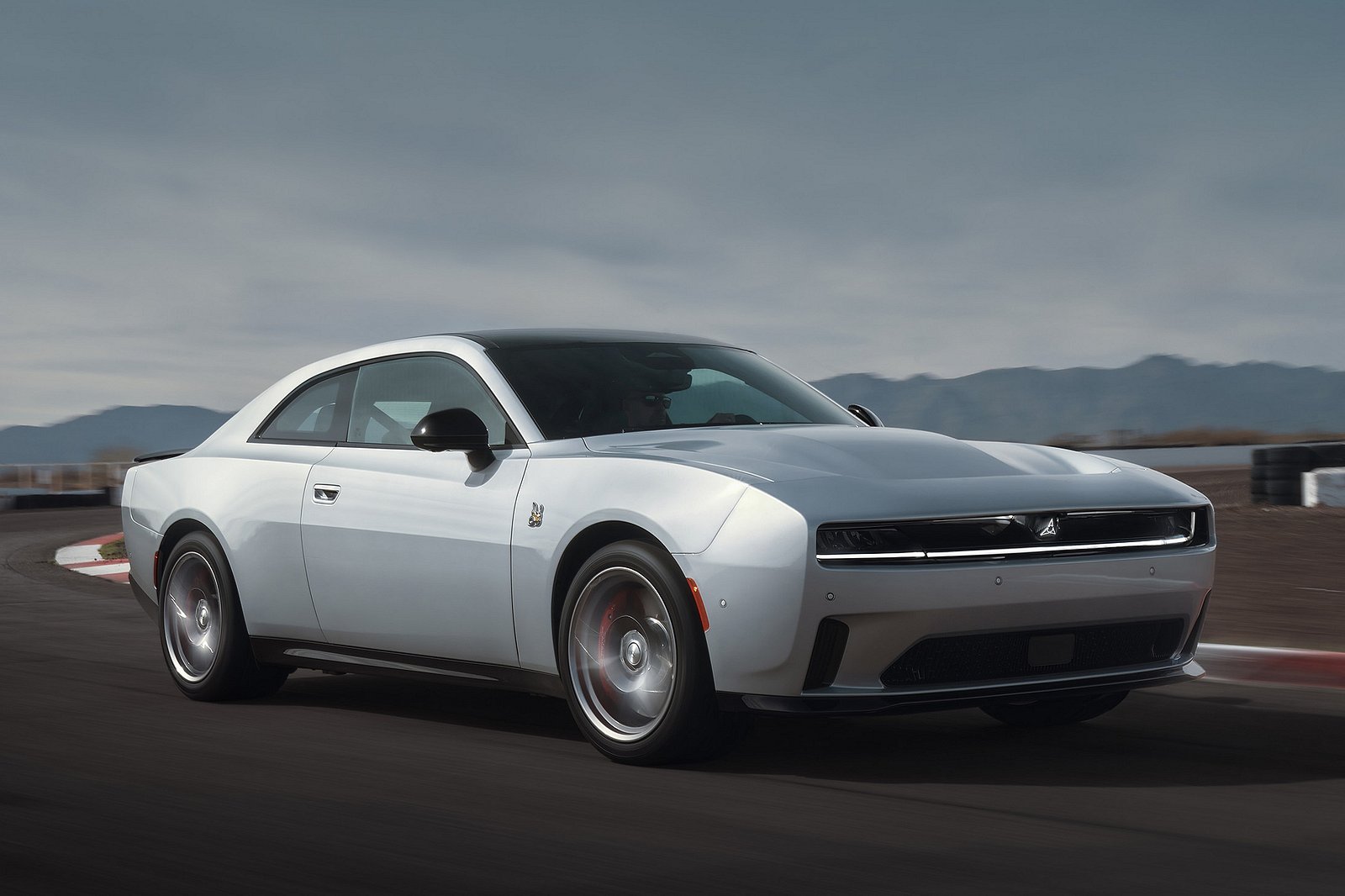

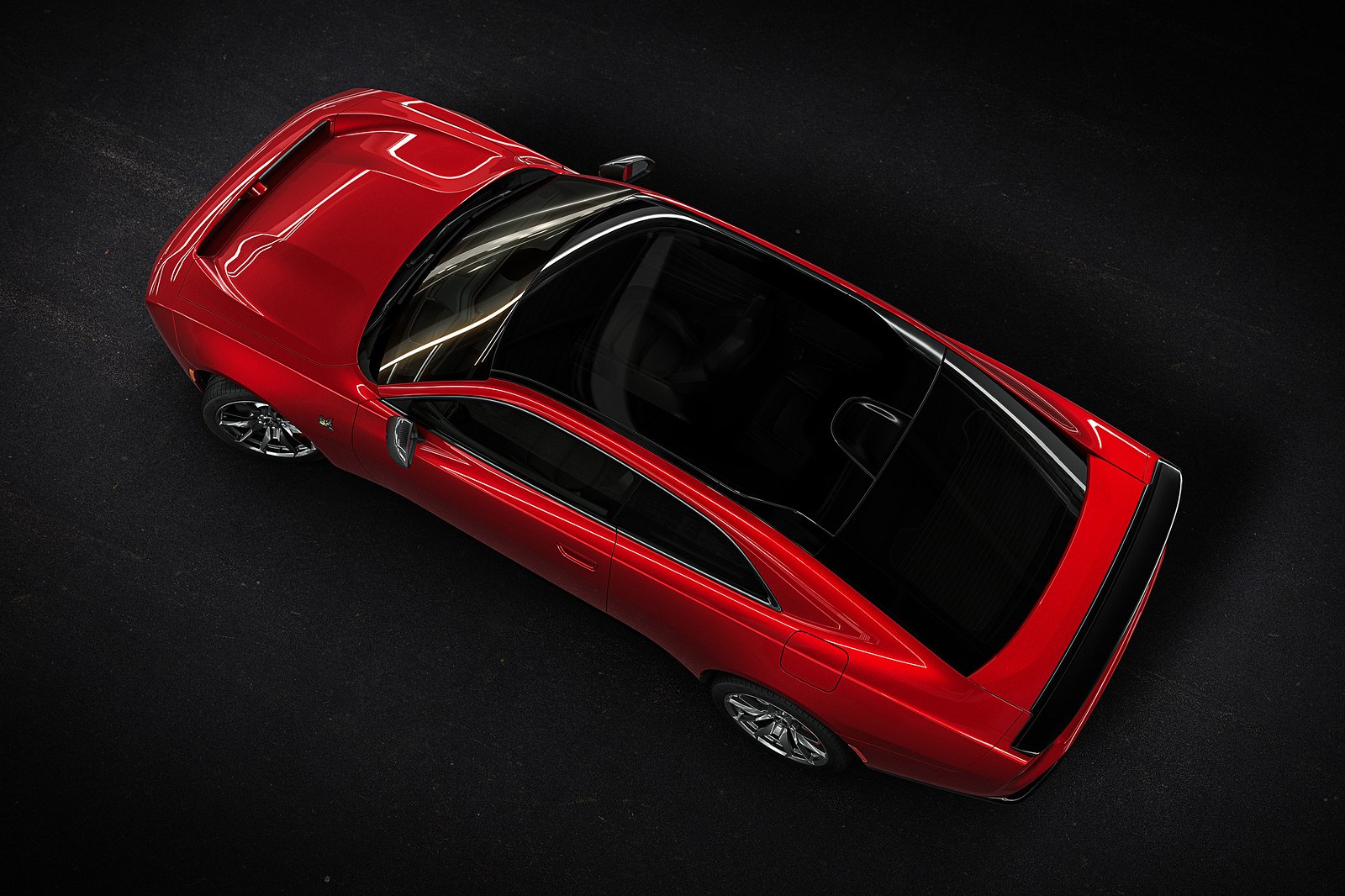
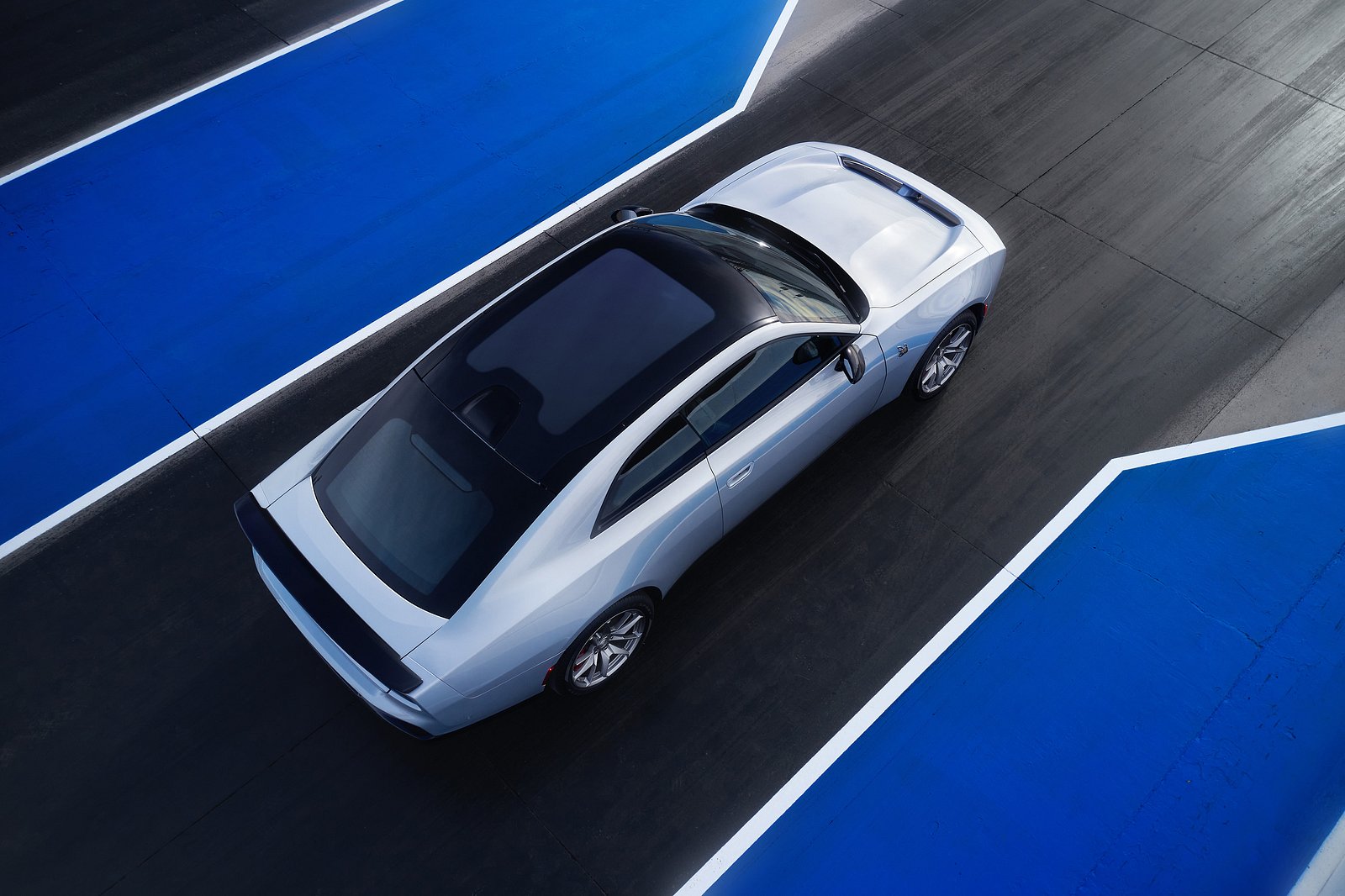
The cabin is not as intense as the initial design, but the disparity is minimal. The innovative 64-color ambient lighting system, known as Attitude Adjustment, is a major contributing factor, with its parametric texture and wraparound layout. The heated steering wheel has a flattened top and bottom and is equipped with paddle shifters. These paddles regulate the regenerative braking system since there is no gearbox. Other noteworthy features include a sleek pistol grip shifter and distinctive badges for each model – the EVs are distinguished by Daytona badges, while combustion models sport Charger badges.
The vehicle comes with standard cloth and vinyl upholstery, however, for added luxury, optional heated seats in both Black Nappa leather and Demonic Red Nappa leather are also offered. Along with these options, the Plus Package, Track Package, and Carbon & Suede Package provide fixed headrest seats with a sleek and athletic design.
The cabin of the car is both spacious and functional. As stated by the manufacturer, there is a “hidden hatch” located at the back of the car that reveals an area with a total volume of 38.5 ft3 (when the rear seats are folded down). This is a significant increase of 133% compared to the previous model, the Charger. Additionally, even with the presence of the R-Wing, the front trunk, or “frunk”, provides an extra 1.5 ft3 of storage space.

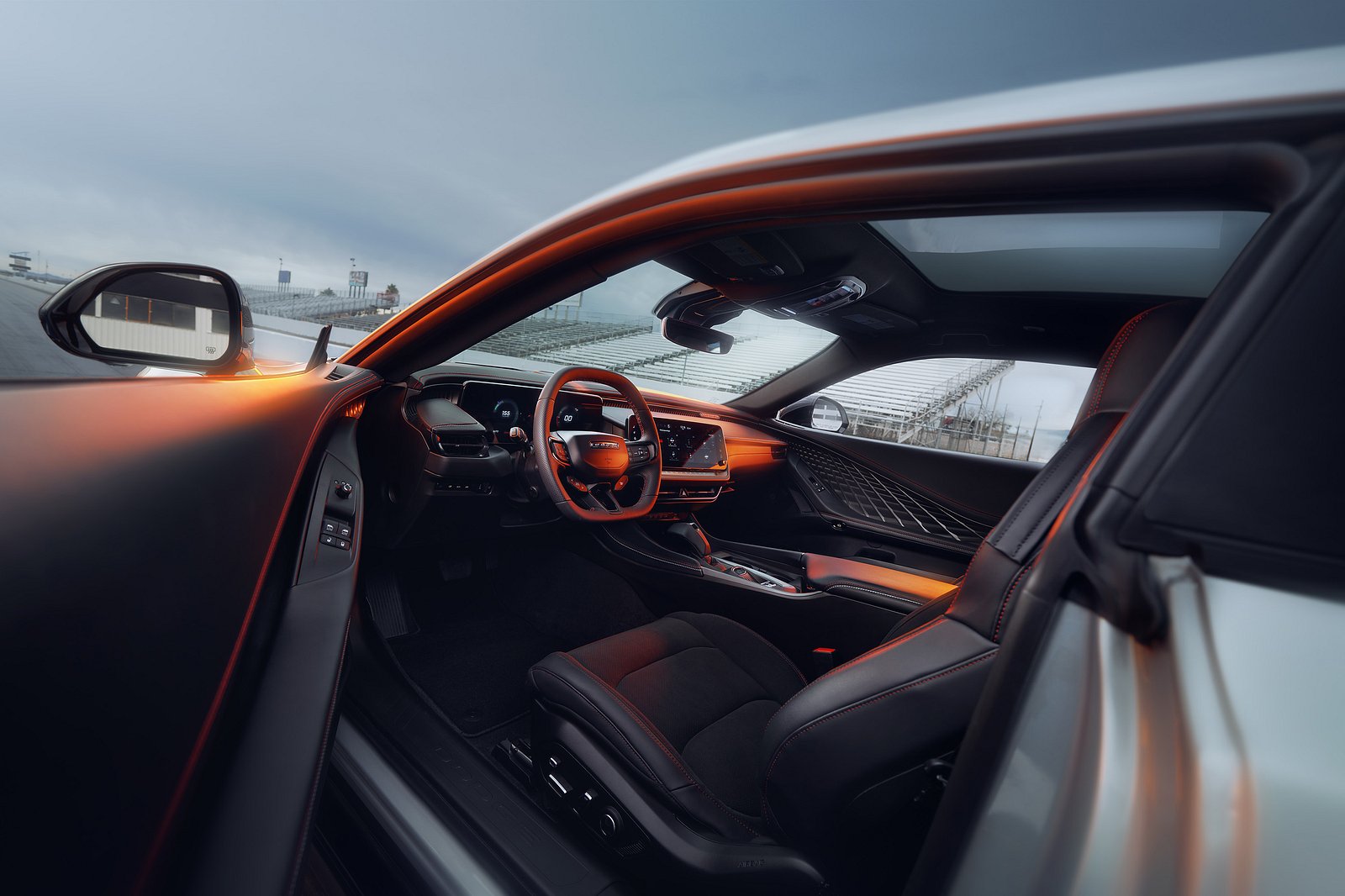


In its usual configuration, the Daytona R/T model comes equipped with a 10.25-inch instrument cluster, whereas the Scat Pack edition boasts an impressive 16 inches of open display space. Both provide an array of layouts and customizable features to reduce any potential disruptions. Additionally, at the core lies a 12.3-inch touchscreen embedded with the advanced Uconnect 5 infotainment system that incorporates convenient wireless connectivity for Apple CarPlay and Android Auto. Furthermore, drivers have the option to add a head-up display for added convenience.
Typically, Alpine provides a 506-watt system with nine speakers, including a subwoofer. However, for all trim levels, an upgraded 914-watt system with 18 speakers is also an option.
Similar to the M1 and M2 buttons on a BMW (not Bimmer nor Beamer), the One-button Push Experience quickly switches between drive modes, leaving no room for excuses if you happen to lose a race. For those interested in high-performance driving, the Track Package offers a 1080p Drive Experience Recorder that captures audio, video, and vehicle data at 60 frames per second.


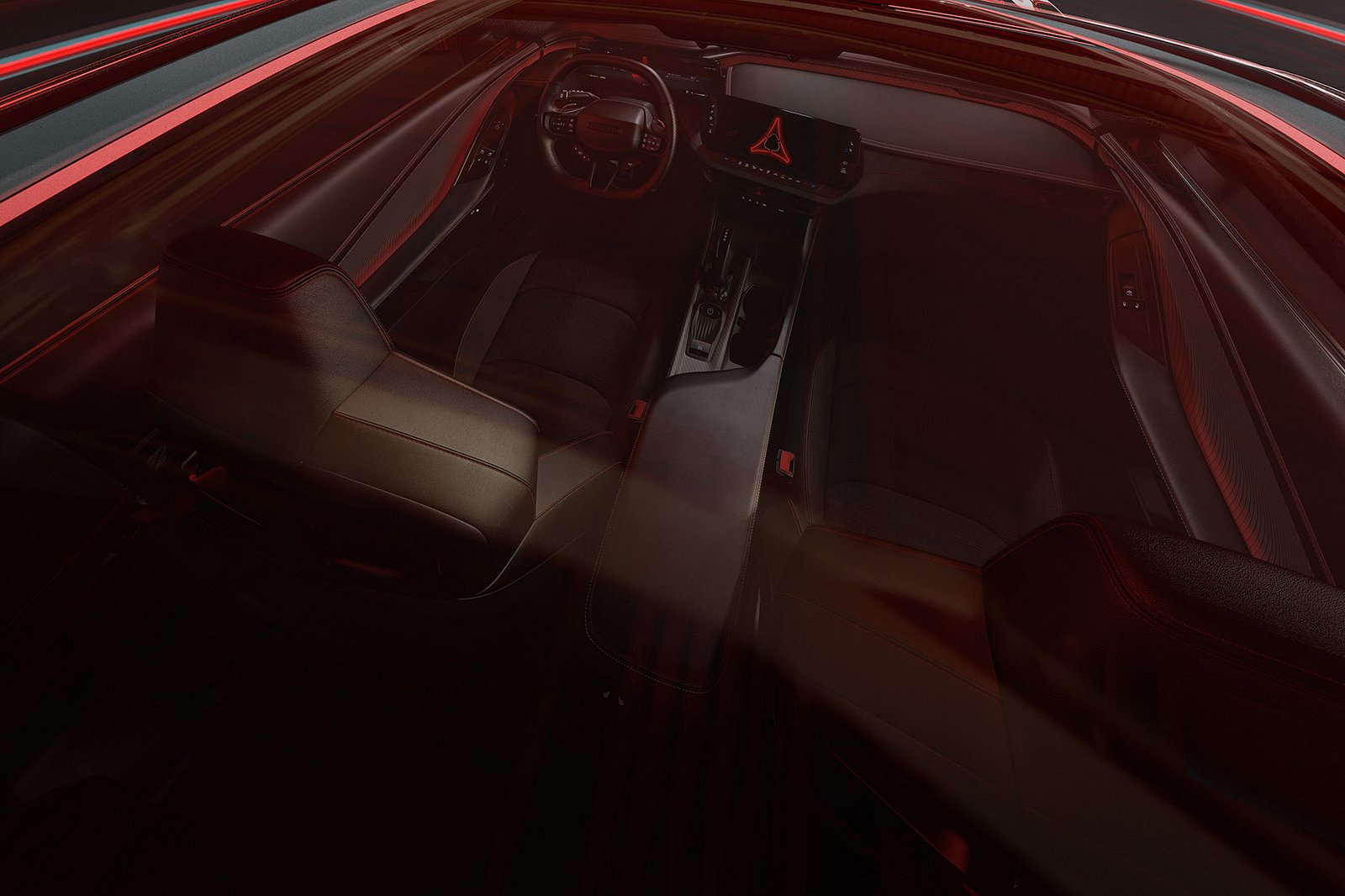
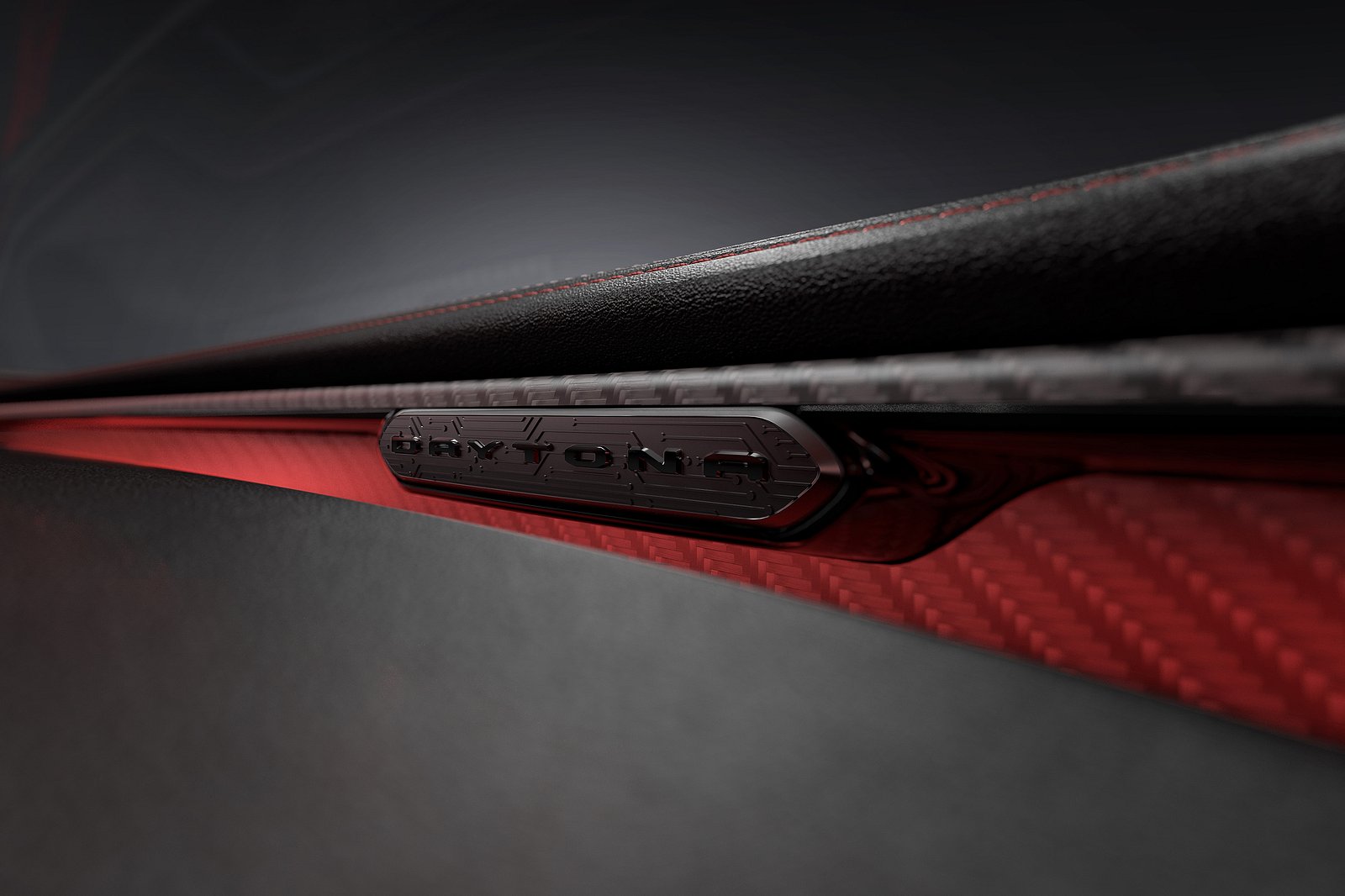
According to estimates, the Dodge Charger Daytona R/T is expected to provide a range of more than 317 miles, while the faster Daytona Scat Pack aims for 260 miles.
When utilizing a Level 3 DC CCS rapid charging system, both the R/T and Scat Pack models can be replenished from 20% to 80% in approximately 27 minutes. With a high-powered 350 kW charger, the R/T has a charging capability of roughly 9.9 miles per minute, while the Scat Pack can charge at a rate of around 8.1 miles per minute. However, when using the slowest compatible charger, a Level 2 AC 11 kW, it could take close to seven hours to reach 80% capacity.
The recently introduced Dodge Charger Daytona, as a member of the Stellantis lineup, will now have the advantage of utilizing the Free2Move Charge network that was established in July of last year.




Stellantis hinted at the upcoming traditional versions of the Charger by unveiling their performance levels. While no visuals were shared, it has been confirmed that the R-Wing design will only be seen on the electric Daytona models, making them distinguishable from others.
Two variants of the Dodge Charger will be available, both equipped with a 3.0-liter twin-turbo straight-six Hurricane engine. The first is the Charger SIXPACK HO (High Output) with an impressive 550 hp, while the second is the Charger SIXPACK SO (Standard Output) with a maximum of 420 hp. According to Dodge CEO Tim Kuniskis, these Hurricane engine-powered models will provide the Brotherhood of Muscle with a gas-powered option that surpasses the horsepower and torque figures of the previous 5.7 and 6.4-liter Hemi engines.
According to Dodge, production of the electric Charger Daytona Scat Pack and Daytona R/T coupes is set to begin in mid-2021. Four-door models will follow in the first quarter of 2025, with gas-powered versions also being manufactured at this time in both coupe and four-door styles. These vehicles will be assembled at the Windsor Assembly Plant.
Pricing details and instructions for placing orders will be provided at a later time.

